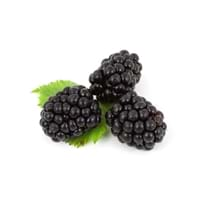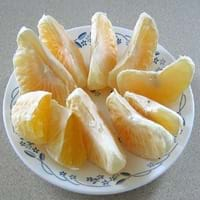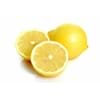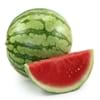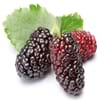Health Benefits
Cancer prevention, Heart care, Increases metabolic rate, Reduces stress, Treatment of dysentary, Treatment of skin Diseases
Increases metabolic rate, Lower blood pressure, Protects against kidney stone formation
General Benefits
Digestive aid, Maintains healthy cholesterol level, Strengthens bones
Gives you energy
Skin Benefits
Hydrates skin, Skin rejuvenation, Skin revitalization
Skin cleansing
Hair Benefits
Promotes longer and healthier hair
NA
Allergy Symptoms
Facial muscle tension, Pressure in sinus, Respiratory congestion, Runny nose, Sneezing, Tingling sensation in wrist and face
NA
Side Effects
Nausea, Vomiting, Might cause change of urine color
Affects blood glucose levels, Decrease in blood sugar levels, Coagulation
Best Time to Eat
Best if taken as a breakfast (or empty stomach), As a snack in the late afternoon, Don't consume at night and before bed, Eat the fresh ones, avoid mixing with any other foods, don't eat after meal., Morning time (before lunch)
As a snack in the late afternoon, Eat the fresh ones, avoid mixing with any other foods, don't eat after meal., Morning time (before lunch)
Vitamin A (Retinol)
Not Available
Vitamin B1 (Thiamin)
Not Available
Vitamin B2 (Riboflavin)
Not Available
Vitamin B3 (Niacin)
Not Available
Vitamin B5 (Pantothenic Acid)
Not Available
Vitamin B6 (Pyridoxin)
Not Available
Vitamin B9 (Folic acid)
Not Available
Vitamin C (Ascorbic Acid)
Vitamin E (Tocopherole)
Not Available
Vitamin K (Phyllochinone)
Not Available
Lutein+Zeaxanthin
Not Available
Water Content
Not Available
Calories in Fresh Fruit with Peel
Calories in Fresh Fruit without Peel
Not Available
Not Available
Calories in Frozen Form
Not Available
Calories in Dried Form
Not Available
Calories in Canned Form
Not Available
Season
Spring, Summer
Dry
Varieties
Prime Ark, Prime Jim, Illini Hardy, Kiowa, Shawnee, Apache, Arapaho, Chester, Hull, Natchez, Navaho and Triple Crown and Von
NA
Color
Purplish black
Orange, Yellow
Inside Color
Magenta
Creamy Yellow
Origin
Asia, Europe, North America, South America
Jamaica
Soil Type
Well-drained
Loamy
Climatic Conditions
Dry, Warm to hot climate
Warm
Facts about
- There are around 2000 varieties of blackberries throughout the world.
- 80-85 degrees is the ideal temperature for its production.
- Leaves of blackberry tree are used to treat sore throats and mild inflammation of the gums.
- The name is derived from the word "ugly" refering to the it's unpleasant appearance, with rough, wrinkled, greenish-yellow rind, wrapped loosely around the orange pulpy citrus inside.
Top Producer
United States of America
Jamaica
Other Countries
China, New Zealand, Serbia, South Africa
NA, United States of America
Top Importer
United States of America
Europe
Top Exporter
Mexico
Jamaica
Botanical Name
Rubus Fruticosus
Citrus reticulata × Citrus paradisi
Synonym
Rubus Millspaughii or Rubus Laciniatus
Tangelo, citrus tangelo
Subkingdom
Tracheobionta
Tracheobionta
Division
Magnoliophyta
NA
Class
Magnoliopsida
Unknown
Species
Rubus fruticosus
C. reticulata × paradisi
Generic Group
Rose
Citrus fruit
Difference Between Blackberry and Ugli fruit
We might think that Blackberry and Ugli fruit are similar with respect to nutritional value and health benefits. But the nutrient content of both fruits is different. Blackberry and Ugli fruit Facts such as their taste, shape, color, and size are also distinct. The difference between Blackberry and Ugli fruit is explained here.
The amount of calories in 100 gm of fresh Blackberry and Ugli fruit with peel is 43.00 kcal and 45.00 kcal and the amount of calories without peel is Not Available and Not Available respectively. Thus, Blackberry and Ugli fruit belong to and category.These fruits might or might not differ with respect to their scientific classification. The order of Blackberry and Ugli fruit is Rosales and Sapindales respectively. Blackberry belongs to Rosaceae family and Ugli fruit belongs to Rutaceae family. Blackberry belongs to Rubus genus of Rubus fruticosus species and Ugli fruit belongs to Citrus genus of C. reticulata × paradisi species. Beings plants, both fruits belong to Plantae Kingdom.
